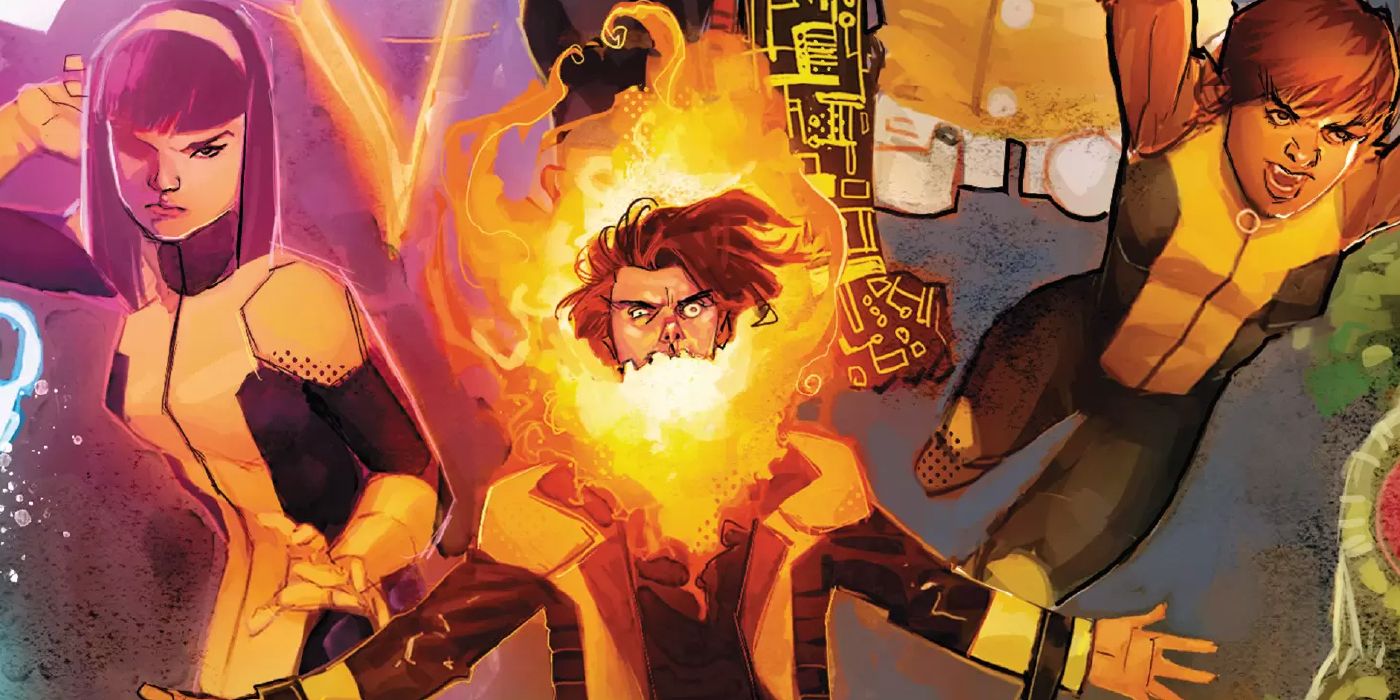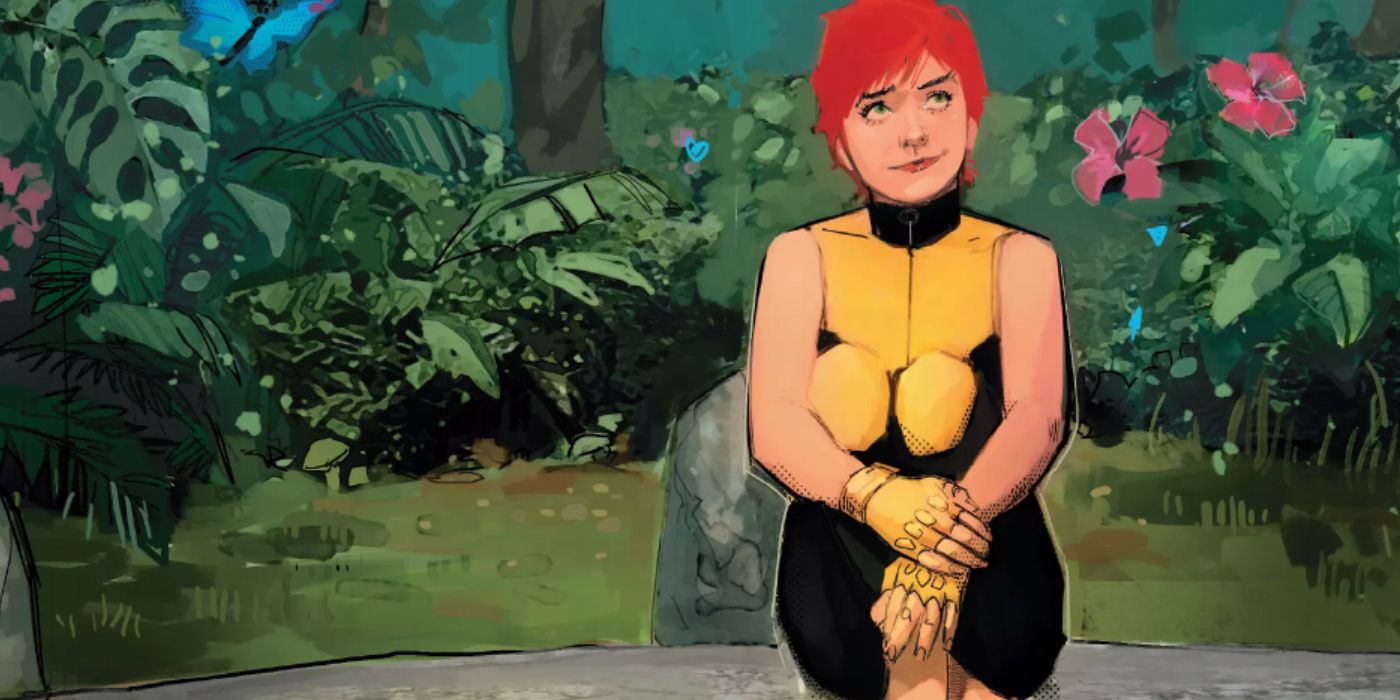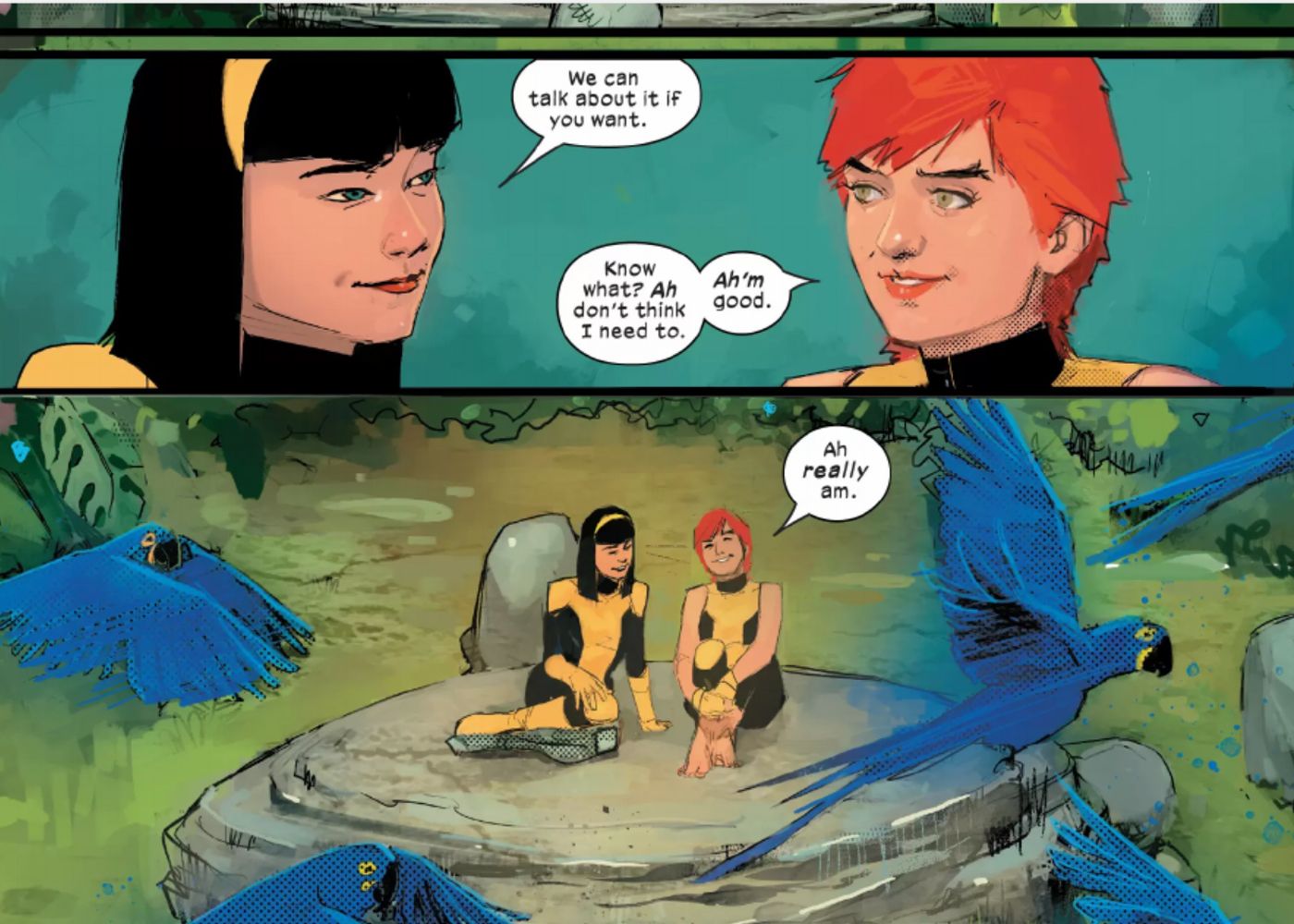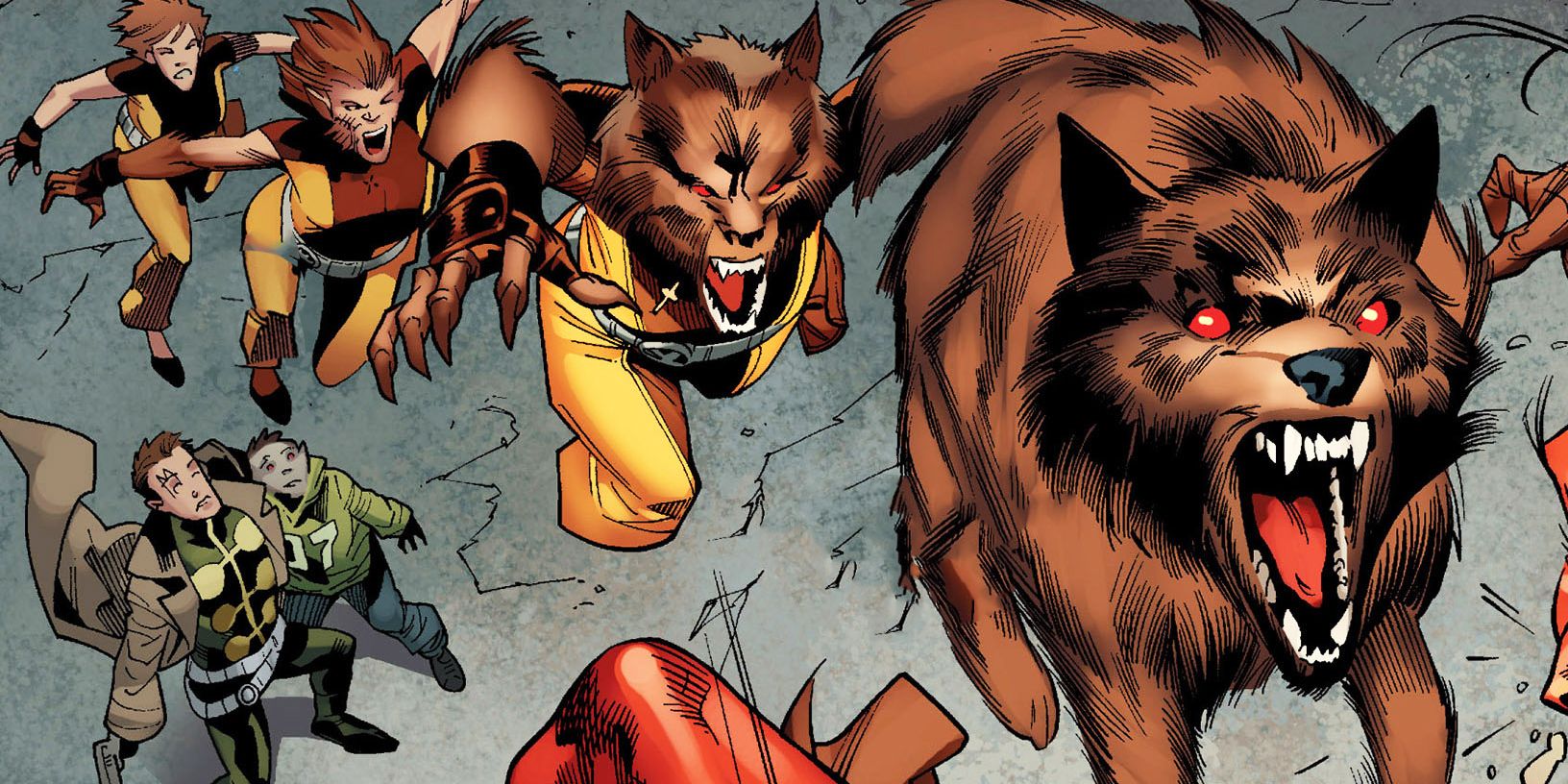WARNING: The following article contains spoilers for New Mutants #1 by Jonathan Hickman, Ed Brisson, and Rod Reis, on sale now.
Since House of X and Powers of X established the budding mutant nation of Krakoa harbors the ability to resurrect any fallen mutants, there sure have been a lot of resurrections in the past few months. Whether the newly-revived characters are villains, much-beloved mainstays, or oft-forgotten background fodder, there really seems to be no limit to which characters are coming back.
However, the most recent resurrection in New Mutants #1 comes with concerns that the trend may be cheapening one of the most controversial deaths in X-Men history.
This issue reveals the resurrection of Rahne Sinclair, better known as Wolfsbane, one of the founding members of the New Mutants. As a sheltered Scottish girl who grew up in a abusive, fundamentalist Christian home, Rahne first saw her ability to transform into a wolf (or a half-human lupine form) as a hellish curse. Although she eventually grew more comfortable with herself, she repeatedly endured overwhelming animal urges toward violence, mind control, and the loss and suffering the comes with being a superhero in the Marvel Universe.
Ultimately, her story seemed to conclude earlier this year in Uncanny X-Men #17, when a group of anti-mutant extremists discovered she was a mutant after she rejected their advances. Enraged by what they most hated, the group of humans savagely beat Wolfsbane to death as she tearfully restrained herself from putting up any kind of defense, despite her years of training.
While the death came after a period when Wolfsbane didn't really have much to do in recent X-Men comics, the scene proved deeply controversial for other reasons. The build up to the moment involved the group of men hitting on Wolfsbane, and then accusing her of trying to "trap" them after she revealed she was a mutant. Some readers viewed the moment as a trivializing parallel to instances of very real instances of violence against trans people, and writer Matthew Rosenberg ultimately apologized.
The fact that her resurrection in New Mutants #1 undoes her sendoff could be interpreted as further trivializing her death and how it reflected real-world trans issues. After Rahne was killed off in such a way, then bringing her back while dismissing the moment that lead to her death seems to minimize the entire affair. Ultimately, Wolfsbane's resurrection deserved to be treated with far more gravity than it was, where it was glossed over with a few comments.
Thematically, there's a palpable irony in a girl raised by an abusive ideological extremist to meet her end at the hands of similar extremists. For a character who was fundamentally hopeful after an especially rough life, the death turns her story into a tragedy that essentially ignores years of growth and evolution. Especially considering how Wolfsbane was basically used as another face in the crowd before her death, her unceremonious reintroduction and willingness to gloss over the details of the recent past -- or how her return to life intersects with her own religious beliefs -- do a disservice to the character.
On the other hand, the resurrection could be seen as a satisfying course-correction for a character that was so poorly mishandled . While her death may closed the thematic loop of her life in tragedy, it didn't really make an abundance of sense from a logical standpoint either. Since Wolfsbane is a well-established mutant hero who's had combat training since her early teenage years and has powers that make her a savage force to be reckoned with, the idea of her being killed by a group of no-name human punks doesn't really track.
What makes Wolfsbane's death even worse is that its impact was lessened by the bevvy of X-deaths that surrounded it in the comics. That era of Uncanny X-Men featured the loss of more than two dozen named X-Men characters, including Wolfsbane's fellow X-Factor member Strong Guy. Both of those characters hadn't appeared since X-Factor series ended in 2013. At that series' close, Wolfsbane seemed content to retire from superheroics and instead dedicate herself toward the quieter life a deacon, retaining her religious faith but still exploring and questioning it as she always had.
However, that deacon subplot was altogether dropped in the ensuing years leading toward her death. Instead Wolfsbane arguably joined the questionably-villainous government of the mutant state New Tian during Secret Empire and was only really a core character in a New Mutants miniseries before her final run in Uncanny X-Men. Even there, she once again left the team in pursuit of a quiet civilian life, hours before her death.
While Wolfsbane's resurrection brought her back to her friends and set them on a space-farring adventure, it, much like her death, still deprives her of the quiet life she's tried to live on multiple occasions. While her death had a borderline callousness and her resurrection pushed her into a new adventure, both of these events undid what was a perfect sendoff for the character that saw her choose to live a normal civilian life.




